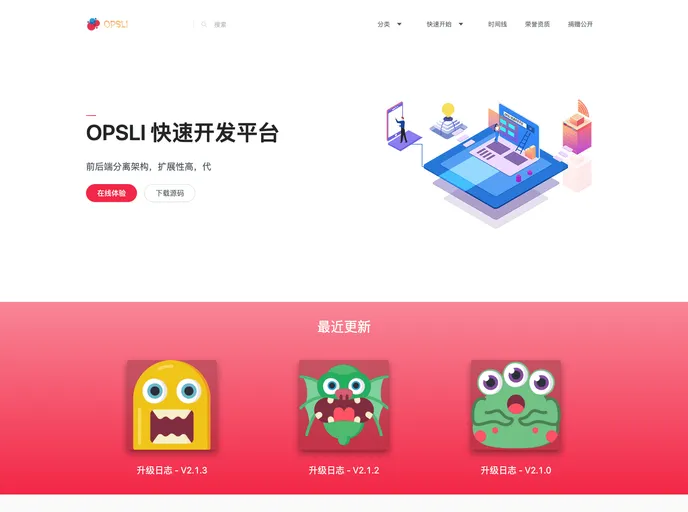OPSLI 快速开发平台基于springboot、vue、element-ui ,项目采用前后端分离架构,热插拔式业务模块与插件扩展性高 ,代码简洁,功能丰富,开箱即用
Overview:
OPSLI is a low-code rapid development platform designed to simplify backend management systems. Built on technologies such as Spring Boot, Vue, and Element UI, it employs a front-end and back-end separation architecture. The platform enables developers to focus more on business logic rather than repetitive tasks, claiming to eliminate up to 70% of redundant work in Java projects. With its user-friendly interface and modular extensions, OPSLI aims to streamline the development process, enhancing both efficiency and cost-effectiveness without compromising flexibility.
Features:
- High Expandability: Built on Spring Security, OPSLI provides a highly extensible login interface that supports various login methods like email, mobile, and third-party authentication.
- Multiple API Management: Automatically supports multiple versions and endpoints, ensuring seamless business expansion without interference between different service versions.
- Code Generation: Utilizes a proprietary code generator alongside the Jfinal Enjoy template engine for visual front-end and back-end code generation, allowing for customizable templates.
- Multi-Tenant Functionality: Offers a comprehensive SaaS solution with a robust multi-tenant architecture, catering to various industry needs effortlessly.
- Data Security Measures: Employs dual encryption for login data and customizable annotation support for data encryption to ensure user privacy and data safety.
- Cache Security: Incorporates a custom Security Cache to mitigate risks related to cache penetration and avalanche problems.
- Identity Protection: Features independent authentication checks for sensitive operations like email or phone modifications, ensuring user identity remains secure.
- Real-time Documentation: Integrates SpringDoc for online API documentation, making it easier for developers to view and debug APIs directly from the platform.
